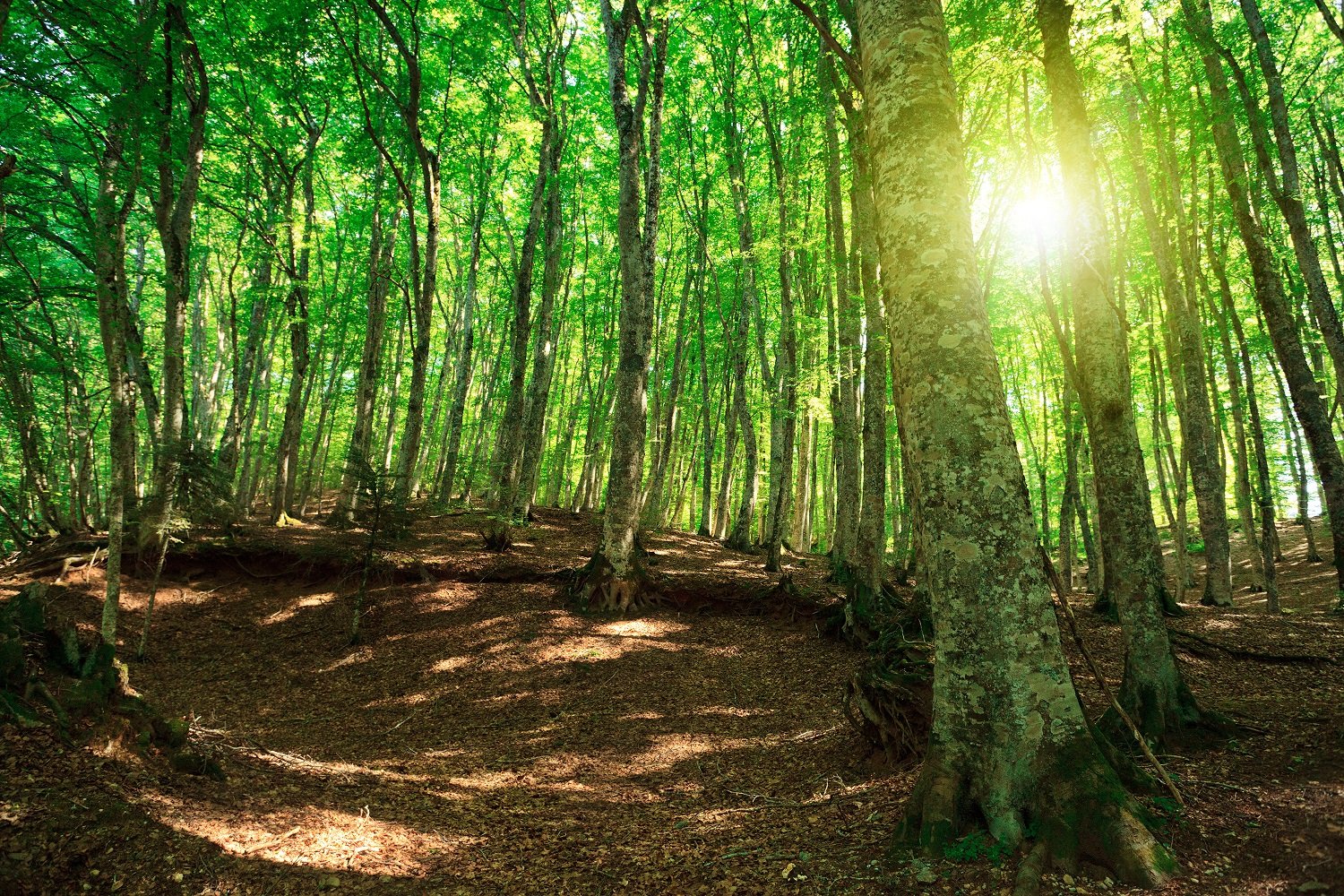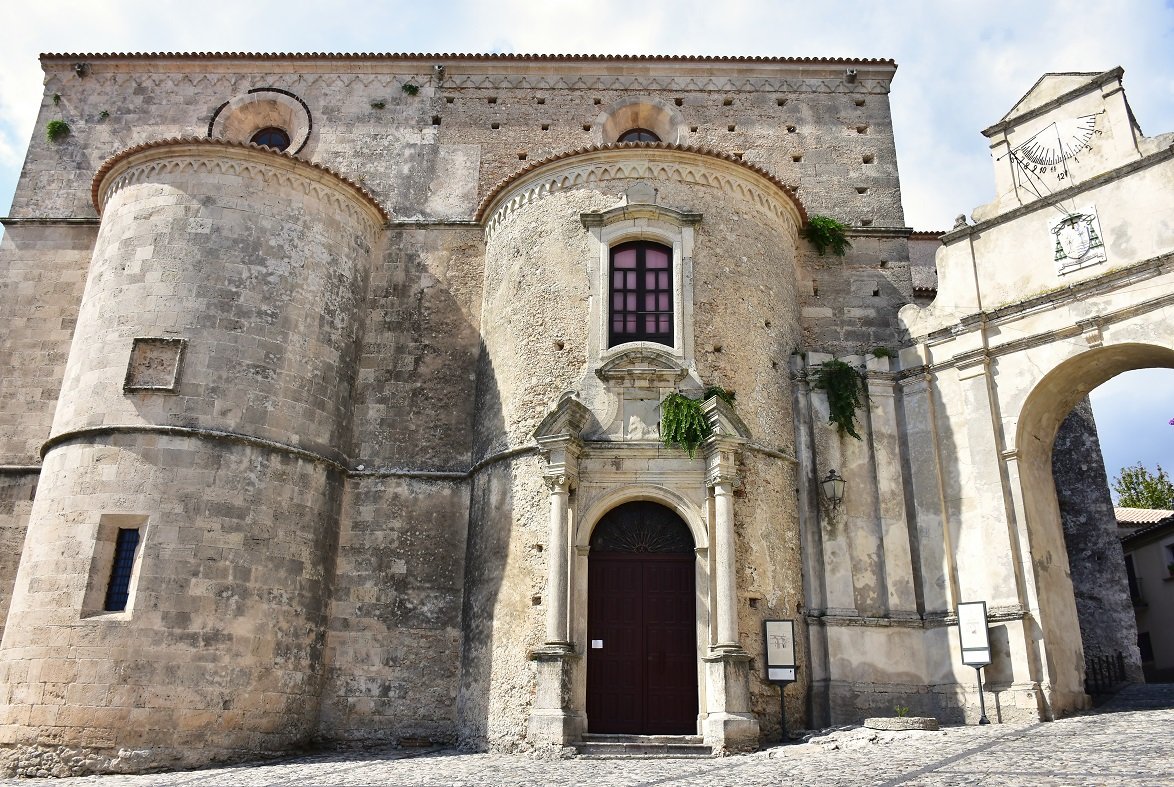The Aspromonte National Park, a land that to many may seem mysterious and not easy to live in, is actually a treasure chest of wonders that opens only to those who really want to get to know it. The Aspromonte National Park was created in 1989 to protect the natural heritage of the Aspromonte section of the former Calabria National Park. Today, it is a reality of great beauty and naturalistic value, enchanting for the diversity and richness of its ecosystems, for the survival of ancient traditions of high anthropological value and for the art and culture that invest the villages of its territory. All these characteristics make it a place to be discovered, where one can still be surprised and amazed.

The territory of the Aspromonte Park is located within the province of Reggio Calabria. It owes its name to the mountainous massif of Aspromonte, which belongs to the Southern Alps or Calabrian Alps. The Park covers more than 65.000 hectares and embraces 37 municipalities (Africo, Antonimina, Bagaladi, Bova, Bruzzano Zeffirio, Canolo, Cardeto, Careri, Ciminà, Cinquefrondi, Cittanova, Condofuri, Cosoleto, Delianuova, Gerace, Mammola, Molochio, Oppido Mamertina, Palizzi, Platì, Reggio Calabria, Roccaforte del Greco, Roghudi, Samo, Sant'Agata del Bianco, Santa Cristina d'Aspromonte, Sant'Eufemia d'Aspromonte, San Giorgio Morgeto, San Lorenzo, San Luca, San Roberto, S.Stefano in Aspromonte, Scido, Scilla, Sinopoli, Staiti and Varapodio) some of which are also included in the Area Grecanica: that fascinating and in some ways remote geographical area, which among its rural landscapes made up of winding mule tracks, still preserves the ancient Greek language that was spoken in this land in ancient times. The park as a whole has a great variety of plant and animal species and enjoys special climatic conditions that favour an environment rich in biodiversity and landscape differences. The Tyrrhenian slope is characterised by a system of faults, in a north-east-south-west direction, which determines the formation of terraces of different heights, while the Ionian slope has uniform slopes that slope down to the coast. Among the striking beech forests, it is not uncommon to come across waterfalls and small oases of peace surrounded by greenery, furrowed by torrents and streams. These, swollen with water during autumn and winter, are instead dry during the warmer periods. Moreover, in the extensive pine forests it is possible to admire the laricio pine, the symbolic tree of Aspromonte and, in some areas, the cultivations of bergamot with its intense perfume that mingles with those of the surrounding nature. The uncontaminated landscapes and the territorial variety make this area the ideal habitat for animals such as wolves, martens and foxes, and birds of prey such as the golden eagle and peregrine falcon that you can meet, if you are lucky, during relaxing walks or adventurous excursions.
In the Aspromonte Park there is no shortage of outdoor activities, unforgettable experiences of history and culture and many other interesting things to see and experience. In fact, this varied and lively territory offers so much to every type of traveller due to its extension and landscape diversity. Within the park, as you can easily imagine, trekking and walking routes abound. One of the most famous and fascinating is the one that follows in the footsteps of Edward Lear, an English writer who fell in love with Calabria and travelled through the Grecanica area on the back of a donkey: the itinerary starts from Pentedattilo and arrives at Palizzi Marina amidst unspoilt, sometimes barren and wild nature. Another worthwhile itinerary leads from San Luca to Pietra Cappa, an ancient and imposing monolith embedded in the mountain. River and waterfall lovers should not miss the itinerary to the Salino Waterfall, which starts from Mammola. There is also no shortage of bridle paths and mountain bike trails, while for relaxation there is easy access to refuges and picnic areas. In winter, too, the park has much to offer: the snow-covered area is home to snowshoe trails and ski slopes for the more sporty traveller. But those who visit the Aspromonte Park should definitely make a stop in one of the villages included in the territory: Bova and Gerace with its characteristic medieval old town will offer unique and picturesque views, while San Giorgio Morgeto with its springs, medieval castle and intertwining streets will make you fall in love with its history. Other points of historical interest are those that show the presence of Basilian monks in the area from the 10th century onwards: these are, to name but a few, the remains of the Santa Barbara Monastery in Mammola and the small church of San Leo in Africo. And, finally, those who cannot do without the sea during their trip can visit Palizzi Marina or Scilla where they can enjoy dreamlike waters.
The typical dishes that characterise the Aspromonte Park are many. Each municipality, in fact, has its own gastronomic traditions and culinary customs. All of them, in any case, are strongly linked to the ancient local peasant culture, which in some cases is combined with oriental influences capable of enhancing the flavours, making them very special. In Calabria, it is impossible not to start with bread: still baked in a wood-burning oven, there is also the typical variant of the pitta, a slightly lower, but equally soft, doughnut-shaped loaf to be eaten stuffed ('pitta china'). How? With indigenous vegetables such as peppers, olives and potatoes from Aspromonte with a compact and tasty texture, or with ricotta cheese and cured meats. The typical pasta is homemade grilled. One of the dishes not to be missed is 'maccaruni i casa', a long pasta similar to fusilli, then dressed with a simple tomato sauce or with a kid meat sauce. Another typical first course is pasta with Aspromonte beans, the 'pappaluni'. To visit Aspromonte and not taste cured meats and cheeses would be unforgivable: the whole of Calabria, in fact, boasts a long tradition of craftsmanship for these foods. In particular, the Caciocavallo di Ciminà (Slow Food presidium), the goat cheeses from Monte Limina and the capicollo azze anca grecanico flavoured with chilli pepper and wild fennel are worth trying. For fish dishes, on the other hand, we must move on to Mammola and Cittanova, famous above all for stockfish with potatoes and peppers. As far as desserts are concerned, on the other hand, alongside the traditional ones found all over Calabria, special mention must be made of 'torrone' in its two most famous variants, i.e. almond nougat and 'cumpittu', i.e. covered with a thick layer of sesame seeds: both alternatives are excellent accompanied by dried fruit and Passito di greco di Bianco wine. The 'agguti' are typical of Easter festivities, made with a baked dough shaped like the letters of the alphabet, and finally, bergamot jams and marmalades are the perfect filling for short pastry bocconotti. Today, bergamot is used to make many characteristic and tasty products, such as slushies, soft drinks and liqueurs that will give a unique taste to the sweet breaks you take during your trip.
There are many events to attend in the Aspromonte Park territory, including festivals, events, festivals and patronal feasts that take place in the municipalities in the area. An event of great importance for the local identity is the one that takes place in December in the Park's visitor centre, near Gerace, namely 'L'oliva grossa di Gerace': an event that celebrates the famous local product and its extra virgin olive oil with music and tastings. In Bova, in November, the 'Festa del vino' (wine festival) is held, an event to promote the area's excellent food and wine products and taste typical local products. In May, 'Cittanova Floreale' is held in Cittanova, an exhibition-market dedicated to plants and flowers in conjunction with cultural events and musical performances. In August, in Gerace, on the occasion of the feast of Sant'Antonio del Castello, the traditional 'ballo del cavalluccio' (piggyback dance) is held, in which a dancer dances with a silhouette shaped like a piggyback on his back: this silhouette is stuffed with firecrackers that burst, but despite this the dancer's dance does not stop. In the same month, Mammola hosts two not-to-be-missed events: the feast of smoked ricotta, a typical product that must be absolutely known, and the feast of stockfish, whose fishing has been practised for centuries. Reggio Calabria also hosts much-awaited events: during the summer months, the National and International Jazz Festival is held, which for many years has made Reggio a meeting and reference point for the inhabitants of the city and neighbouring municipalities. In August, it is the turn of the 'Festival dello Stretto', a series of events and shows with an ethnic-musical theme in which many artists interpret in their own dialect or language the traditions, customs and habits of southern Italy, to keep alive and unite a cultural identity to be shown in all its facets.





